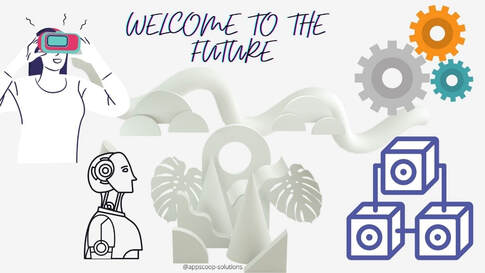This, of course, is the most common app trend and the most talked about as well. Why not, right? Look at what all it offers – and it is here to change the world, to say the least. This technology will surely play a leading role in transforming the mobile application development scene. Reports suggest that this technology will co-exist with 4g until it covers a mammoth area. And despite 5g is still gaining traction, it will surely gain popularity in 2022.
A small radio transmitter that can change the way users interact with the application – is the worth of beacon technology. In 2013, Apple introduced iBeacon – a type of Bluetooth Low Energy (BLE) to connect with their users better. This service broadcast their identifier to nearby portable electronic devices. Their purpose was to target marketing and retail apps. Now that eCommerce is booming more than ever, this technology will surely take it to new heights of success. Giving a true essence of the customer behaviour, beacon technology in the coming year, will once again lend a helping hand to the developers to create mesmerizing applications.
https://www.aalpha.net/articles/beacon-app-development-advantages/
3. Wearable App Integration
Wearables are an extension of a smartphone which usually has a small screen and can be worn around your wrist, ankle, etc. It has been in trend for the past decade, and by the end of 2022, connected wearable devices will reach over 929 million. Some of the common examples of wearables are smartwatches, fitness trackers like FitBit, Google Glass, and others. They simply enhance your experience giving you a personified extension of what you are always looking for. Incorporating wearables will give the developers an upper hand to understand the users better.
4. Low-code App development
It’s a written fact that time and money are precious for any given business. Low-code app development builds software that reduces the time of fruition by decreasing the need to write the code. Such codes are no-fuss, straightforward, cost-effective, low-maintenance, and much more. This further acts as a catalyst for business development.
Creating without limits – Wix, an Israeli software company launched, an application that enables users to develop apps without writing code. And to bust the myth, low-code or no-code is not a threat to the developers. Developers do have a lot on their plate. This system rather makes their jobs hassle-free and more valuable. So, this new year, get ready to embrace the new side of low-code app development.
This scenario might sound like something out of the dream. A few years ago, American Express, gave tennis fans a chance to enjoy a game with their favourite player virtually. Touted as ‘You vs Sharapova’, this VR-based game allowed the fans to go head-to-head with tennis sensation Maria Sharapova. This enhanced the user experience by incorporating the computer-generated image of the player.
Coming to the blockchain element, the way it has seeped into various industries is unimaginable. And the mobile application development arena is no different. Currently, there are over 81 million blockchain wallets, and a report by net solutions suggests, people are drawn towards mobile wallets as the preferred blockchain wallet owing to what this technology offers. This year, these technologies, without any doubt, will inspire developers to incorporate them and help us attain an efficient world that is ‘beyond the future’.
6. Mobile Learning Apps
It is a competitive world, and we always need to be on our toes. Sure, we are surrounded by laptops, but 95 per cent of the time, our smartphones accompany us. There are times when we might forget our house keys, but our smartphones – never! To keep up with the rat race in this fast-paced world, it is essential to learn, unlearn, and relearn.
Let’s talk examples. LinkedIn is by far one of the most professional applications that allow mobile learning on the go. Used mostly for corporates for their career growth or by students who wish to add weightage to their resume, LinkedIn mobile learning permits participants to stay up to date, join discussions to increase their expertise, and grow their industry experience.
7. Touchless UI
‘Hey, Siri! What’s the temperature today?’ or ‘Alexa, please add ‘Spinach’ to my grocery list’. These voice commands are just the beginning. A smartphone is something that should be accessible and usable for all. Specially-able people or elderly aren’t at ease while using mobiles at times. Developers are plotting a plan to come up with voice-driven interfaces or gesture-based interfaces to serve. Thinking out of the box, this touchless UI content will surely pave its way to stardom in 2022.
Conclusion
Mobile applications have become an inseparable part of our lives. It helps a product reach many, thrusts a business to success, and connects people. There are millions of apps in the store, and your app should have the potential to shine amongst all. These surely are our top 7 mobile applications trends, but our diligent team are working on more such trends, which will surely pump up your business. Wondering how? Reach us, to know more: https://app-scoop.com/contact-us.html










1 Comment
allo talk chat · February 16, 2022 at 12:52 pm
Howdy!Thhis is my first visit to your blog!
We are a team of volunteers and starting a new initiative in a community in the same
niche. Your blog provided us valuable information too work on. You have done
a outstanding job!
Here is my blog :: allo talk chat
Comments are closed.